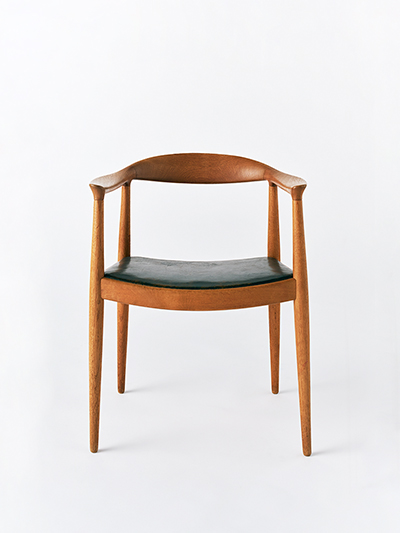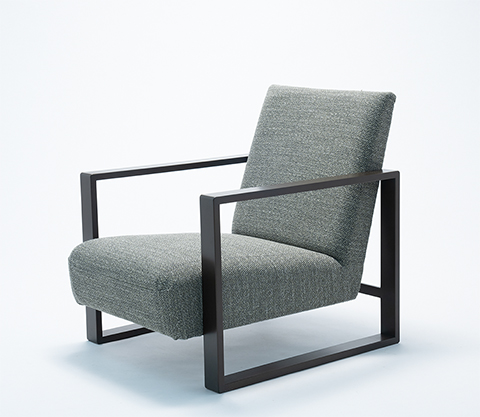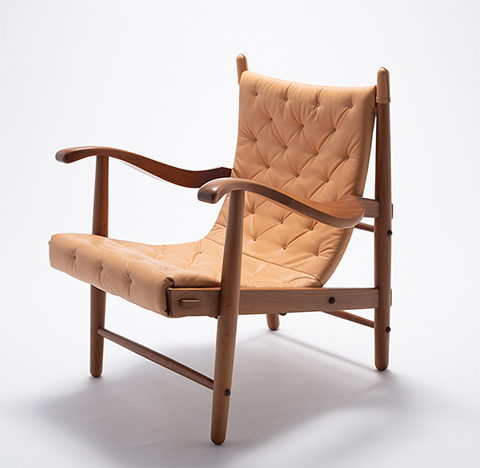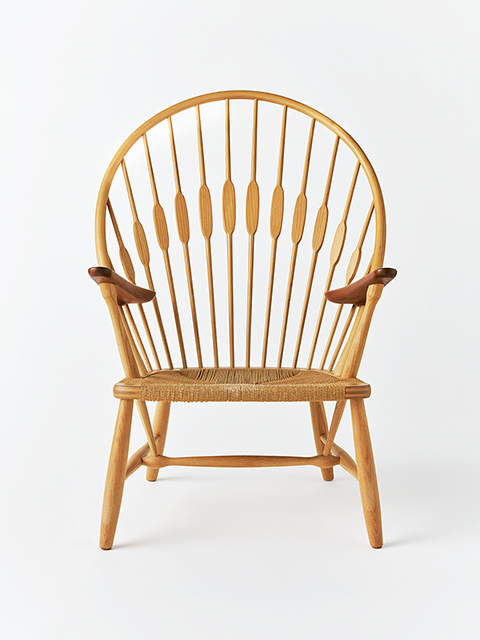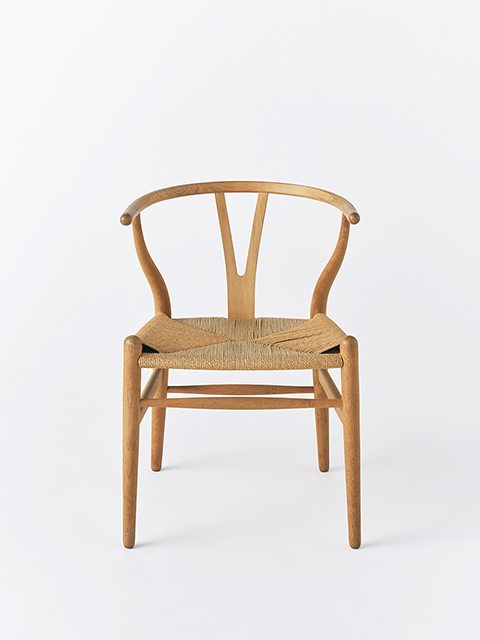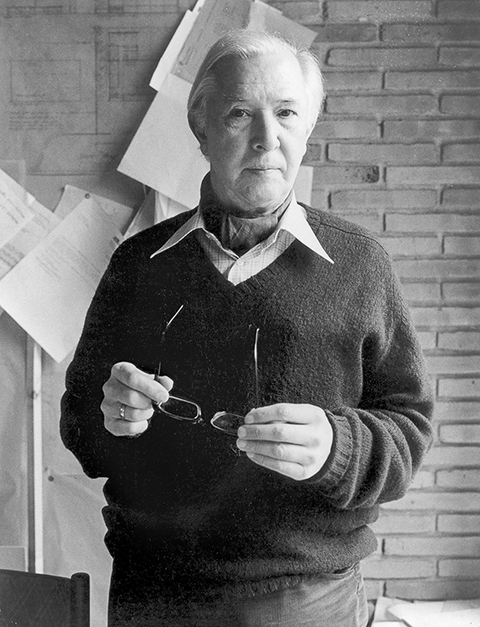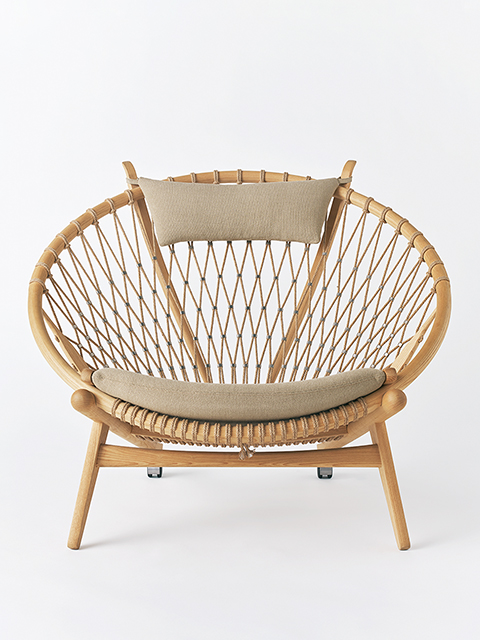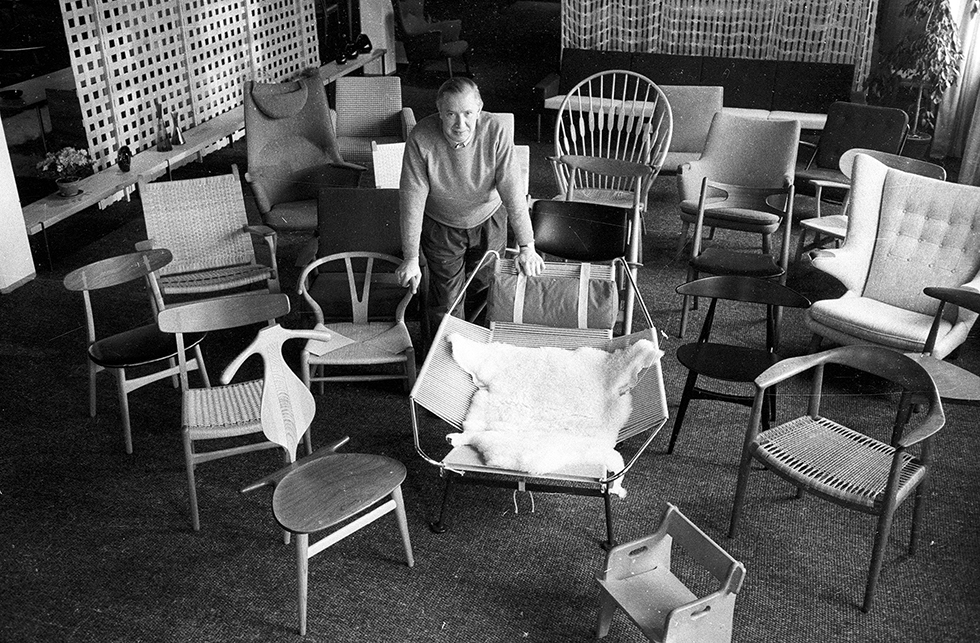
Icons of Danish Design Brought Together in an Exhibition of Historic Scale
Hans J. Wegner (1914–2007) is regarded not only as a central figure in Danish mid-century design, but also as one of the foremost names in 20th-century furniture design overall. His landmark works The Chair (1949) and Y-Chair (1950) are widely recognized and admired. Combining extraordinary skill as a cabinetmaker with profound insight into materials, Wegner produced more than 500 chairs over the course of his career.
This exhibition was organized in cooperation with Higashikawa-cho, Hokkaido, home to the collection of Oda Noritsugu, an internationally esteemed chair researcher and collector of modern furniture with a focus on Scandinavia. It brings together approximately 160 chairs along with other furniture in the largest Wegner retrospective ever held in Japan. What defines the lasting appeal of Wegner, a master of design whose work continues to be cherished today? With exhibition design by internationally renowned architect Tane Tsuyoshi (Atelier Tsuyoshi Tane Architects), the exhibition explores Wegner’s achievements and design philosophy through an extensive selection of works and related materials.
Hans Wegner Exhibition: Four Highlights
HIGHLIGHT1Wegner’s largest retrospective ever held in Japan
HIGHLIGHT2Reproduction of the rarely seen First Chair on view
HIGHLIGHT3Behind the scenes of his Wegner’s iconic chairs, exploring his philosophy through the production process
HIGHLIGHT4An area where visitors can sit in chairs, experiencing designs that unite beauty with uncompromising functionality
Who Was Hans J. Wegner?
Hans Jørgensen Wegner was born in 1914 in Tønder, a town on the border between Denmark and Germany. He earned his certification as a cabinetmaker at the age of eighteen and began working as a designer around 1938. In 1940, he joined the architectural project for Aarhus City Hall, led by Arne Jacobsen and Erik Møller, designing the furniture for the building. Wegner went on to collaborate with a number of furniture manufacturers, including Johannes Hansen, producing many iconic chairs during the mid-century years. His highly original designs, grounded in a deep understanding of materials and craftsmanship, continue to be celebrated internationally today.
The Oda Collection
The Oda Collection consists of outstanding 20th-century furniture and everyday objects collected internationally and studied by chair researcher Oda Noritsugu. Centered on Scandinavian design, it comprises more than 8,000 items, including chairs, tables, lighting, tableware, cutlery, and toys. Systematically assembled along with approximately 20,000 related materials such as books, photographs, and drawings, it is a priceless collection without parallel anywhere in the world. Today, the approximately 1,350 chairs forming its core have been made public property by Higashikawa-cho, Hokkaido, and registered as cultural assets. Through exhibitions and lectures, the collection offers insights into the joy of living beautifully and mindfully.


